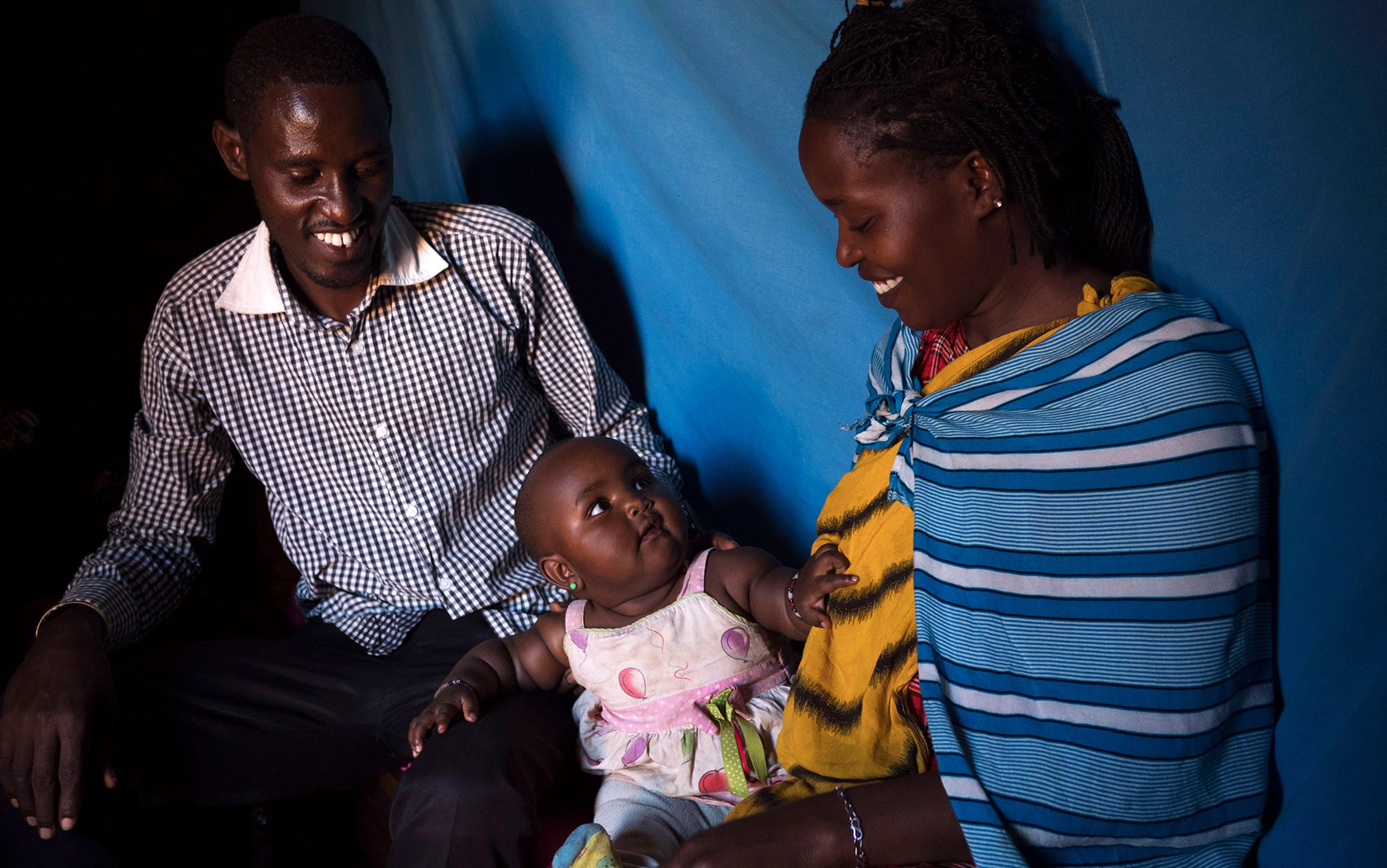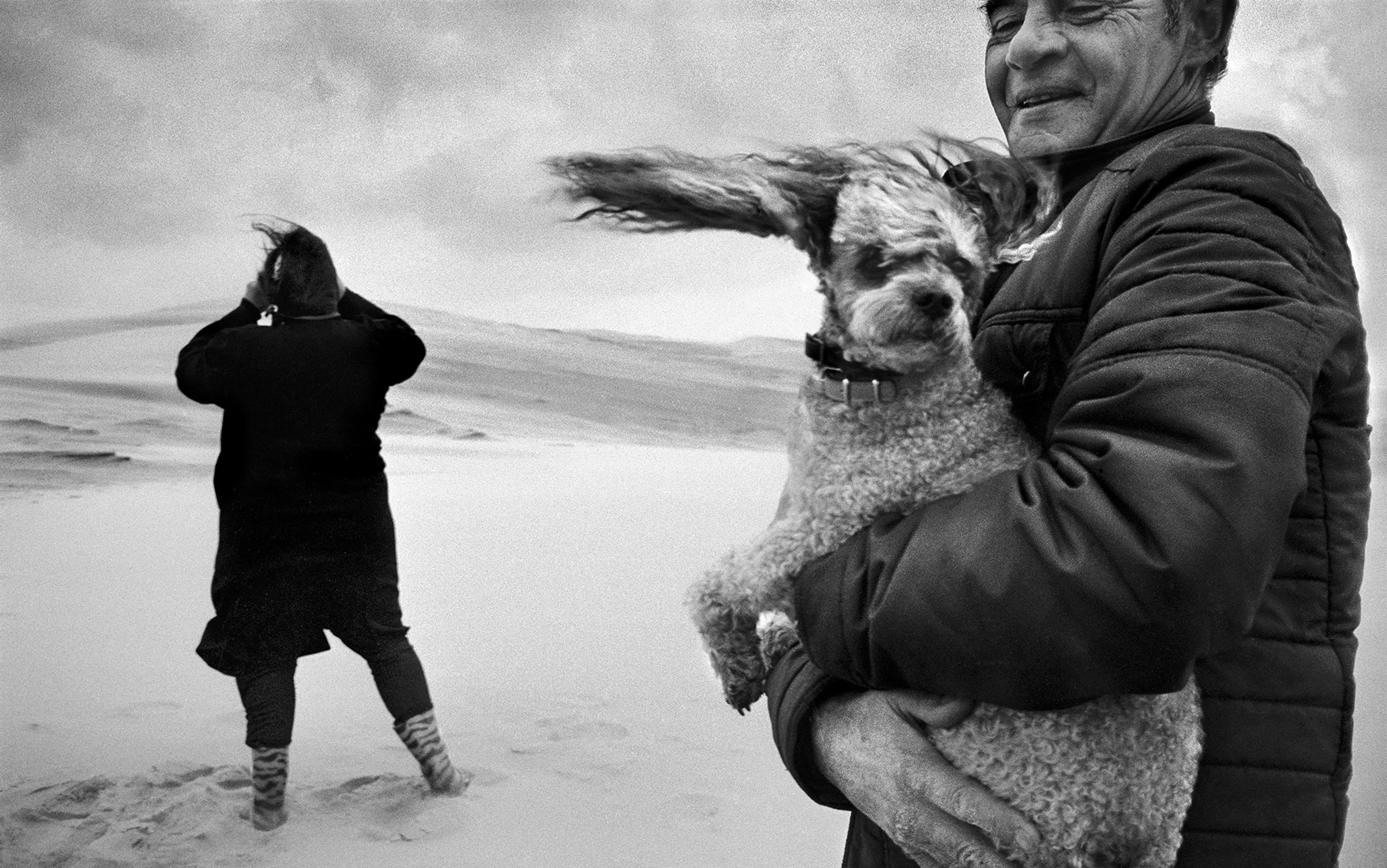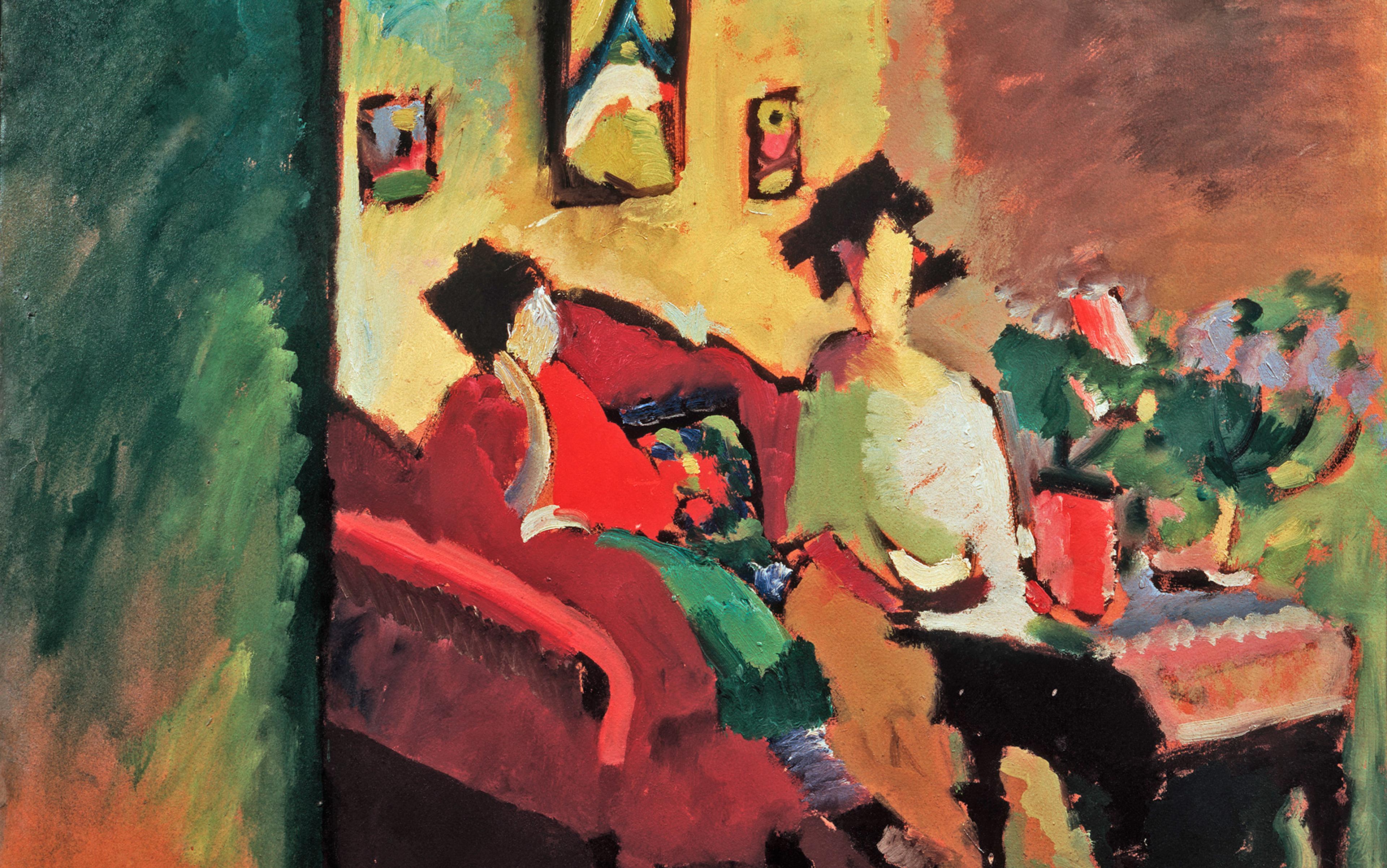In 2006, a team of Norwegian researchers set out to study how experienced psychotherapists help people to change. Led by Michael Rønnestad, a professor of clinical psychology at the University of Oslo, the team followed 50 therapist-patient pairs, tracking, in minute detail, what the therapists did that made them so effective. Margrethe Halvorsen, a post-doc at the time, was given the job of interviewing the patients at the end of the treatment. That’s how she met Cora – a woman in her late 40s, single, childless, easy to like. As a kid, Cora (a pseudonym) had suffered repeated sexual abuse at the hands of her mother and her mother’s friends. Before entering therapy, she habitually self-harmed. She’d tried to kill herself a number of times too, her body still scarred by the remnants of suicides not carried through.
‘Her story was in the room,’ Halvorsen tells me, then grows quiet as she stumbles to convey the strong impression that Cora left on her. Seven years after they met, it’s still hard to articulate: ‘Maybe presence is the right word.’ It was the way that Cora spoke of the atrocities done to her – in a steady voice, with clear eyes – that made the researcher wonder how someone so scarred could seem so alive, and undiminished.
At one point during their interview, when Halvorsen asked Cora to describe her therapy in a picture or a word, she’d blurted out: ‘It saved my life.’ Intrigued, she invited three fellow psychologists to help her delve deeper into Cora’s case and uncover what had happened in the therapy room. ‘We didn’t know what we were getting into,’ Halvorsen told me. Following initial interviews with both Cora and her therapist, the researchers ploughed through a total of 242 summary notes that the two had written after each session over the course of the three-year study. From this data, the team selected and transcribed verbatim 25 sessions that seemed particularly important. The final material approached 500 pages of single-spaced text. Halvorsen and her colleagues puzzled over it for more than two years in a bid to understand what, exactly, had saved Cora’s life.
When you delve into it, the question of how people change through therapy can make your head swim. Here’s a psychological intervention that seems to work as well as drugs (and, studies suggest, possibly better over the long term), and yet what is it, precisely, that works? Two people sit in a room and talk, every week, for a set amount of time, and at some point one of them walks out the door a different person, no longer beleaguered by pain, crippled by fear or crushed by despair. Why? How?
Things get even more puzzling if you consider the sheer number of therapies on offer and the conflicting methods that they often employ. Some want you to feel more (eg, psychodynamic and emotion-focused approaches); others – to feel less and think more (eg, cognitive behavioural therapies, or CBT). The former see difficult emotions as something that needs to come out, be worked through and re-assimilated; the latter – as something to be challenged and controlled through conscious modification of negative thoughts. Some therapists don’t even talk much of the time, letting the silence wring uncomfortable truths out of their clients; others hardly pause between structured sequences of exercises and homework assignments. Across more than 400 psychotherapies available today, your shrink can take the form of a healer, a confidante, a clinical expert, a mental-fitness coach or any combination, shade and hue of these.
Over the past three years, I’ve talked to dozens of therapists from various schools, trying to understand how therapy works – and by this I mean heals: the darker entrapments of compulsive confession or the complex entanglements of unresolved transference are not my subjects here. Lately, I’ve broadened my quest to understand the basis of therapeutic efficacy to include researchers as well as practitioners, but most of these conversations left me feeling that neither the experts studying therapeutic change nor those effecting it could, when pressed, convincingly explain how people heal. Begrudgingly, I kept going back to what Alan Kazdin, a professor of psychology and child psychiatry at Yale University, said in 2009 in a widely cited paper: ‘It is remarkable that after decades of psychotherapy research we cannot provide an evidence-based explanation for how or why even our most well-studied interventions produce change.’
What happens between client and therapist goes beyond mere talking, and goes deeper than clinical treatment
To complicate matters, numerous studies over the past few decades have reached what seems a counterintuitive conclusion: that all psychotherapies have roughly equal effects. This is known as the ‘dodo bird verdict’ – named after a character in Alice in Wonderland (1865) who declares after a running contest: ‘Everybody has won and all must have prizes.’ That no single form of therapy has proved superior to others might come as a surprise to readers, but it’s mightily familiar to researchers in the field. ‘There is so much data for this conclusion that if it were not so threatening to specific theories it would long ago have been accepted as one of psychology’s major findings,’ writes Arthur Bohart, professor emeritus at California State University, Dominguez Hills, and author of several books on psychotherapy.
Even so, this alleged equivalence among various therapies is a product of statistics. It says nothing about what works best for each specific individual, nor does it imply that you can pick any therapy and obtain the same benefit. Perhaps some people fare well with the structure and direction of a cognitive approach, while others respond better to the open-ended exploration and sense-making offered by psychodynamic or existential perspectives. When aggregated, these individual differences can cancel out, making all therapies appear equally effective.
A lot of researchers, however, believe that this is not the only explanation. For them, the deeper reason why no single psychotherapy seems to provide unique advantages over any other is that they all work because of shared elements. Chief among these is the therapeutic relationship, connected to positive outcomes by a wealth of evidence. The emotional bond and the collaboration between client and therapist – called the alliance – have emerged as a strong predictor of improvement, even in therapies that don’t emphasise relational factors. Until recently, most studies of this alliance could show only that it correlates with better mental health in clients, but advances in research methods now find evidence for a causal link, suggesting that the therapy relationship might indeed be healing. Similarly, research into the traits of effective therapists has revealed that their greater experience with or a stricter adherence to a specific approach do not lead to improved outcomes whereas empathy, warmth, hopefulness and emotional expressiveness do.
All of this suggests a tantalising alternative to both the medical professional’s and the layperson’s view of therapy: that what happens between client and therapist goes beyond mere talking, and goes deeper than clinical treatment. The relationship is both greater and more primal, and it compares with the developmental strides that play out between mother and baby, and that help to turn a diapered mess into a normal, healthy person. I am referring to attachment. To push the analogy further, what if, attachment theory asks, therapy gives you the chance to reach back and repair your earliest emotional bonds, correcting, as you do, the noxious mechanics of your mental afflictions?
Attachment theory traces its roots to the British psychoanalyst John Bowlby, who in the 1950s combined evolutionary theory and psychoanalysis into a brave new paradigm. Aghast at his profession’s lack of academic rigour, Bowlby turned to the burgeoning science of animal behaviour. Experiments with infant monkeys (some so plainly cruel that no ethical board would permit them today) had challenged the then-prevailing notion that infants see their mothers chiefly as a source of food. Bowlby realised that ‘the mother-infant bond is not purely generated by the drive to latch onto the breast, but it’s also motivated by this idea of comfort,’ says Jeremy Holmes, a British professor of psychological therapies (now part-retired) and co-author of the book Attachment in Therapeutic Practice (2018).
The search for comfort, or security, Bowlby argued, is an inborn need: we’ve evolved to seek attachment to ‘older, wiser’ caregivers to protect us from danger during the long spell of helplessness known as childhood. The attachment figure, usually one or both parents, becomes a secure base from which to explore the world, and a safe haven to return to for comfort. According to Holmes, Bowlby saw in attachment theory ‘the beginning of a science of intimate relationships’ and the promise that ‘if we could study parents and children, and the way they relate to each other, we can begin to understand what happens in the consulting room’ between client and therapist.
Research on attachment theory suggests that early interactions with caregivers can dramatically affect your beliefs about yourself, your expectations of others, the way you process information, cope with stress and regulate your emotions as an adult. For example, children of sensitive mothers – the cooing, soothing type – develop secure attachment, learn to accept and express negative feelings, lean on others for help, and trust their own ability to deal with stress.
The good therapist becomes a temporary attachment figure, assuming the functions of a nurturing mother
By contrast, children of unresponsive or insensitive caregivers form insecure attachment. They become anxious and easily distressed by the smallest sign of separation from their attachment figure. Harsh or dismissive mothers produce avoidant infants, who suppress their emotions and deal with stress alone. Finally, children with abusive caregivers become disorganised; they switch between avoidant and anxious coping, engage in odd behaviours and, like Cora, they often self-harm.
Anxious, avoidant and disorganised attachment styles develop as responses to inadequate caregiving: a case of ‘making the best of a bad situation’. But the repeated interactions with deficient early attachment figures can become neutrally encoded and then subconsciously activated later in life, especially in stressful and intimate situations. That’s how your childhood attachment patterns can solidify into a corrosive part of your personality, distorting how you see and experience the world, and how you interact with other people. The psychologist Mario Mikulincer of the Interdisciplinary Center Herzliya in Israel is one of the pioneers of modern attachment theory, studying precisely such cascading effects. In a number of experiments spanning two decades, he has found that, as adults, anxious people have low self-esteem and are easily overwhelmed by negative emotions. They also tend to exaggerate threats and doubt their ability to deal with them. Driven by a desperate need for safety, such people seek to ‘merge’ with their partners and they can become suspicious, jealous or angry towards them, often without objective cause.
If the anxious among us crave connection, avoidant people strive for distance and control. They detach from strong emotions (both positive and negative), withdraw from conflicts and avoid intimacy. Their self-reliance means that they see themselves as strong and independent, but this positive image comes at the expense of maintaining a negative view of others. As a result, their close relationships remain superficial, cool and unsatisfying. And while being emotionally numb can help avoidant people weather ordinary challenges, research shows that, in the midst of a crisis, their defences can crumble and leave them extremely vulnerable.
It isn’t hard to see how such attachment patterns can undermine mental health. Both anxious and avoidant coping have been linked to a heightened risk of anxiety, depression, loneliness, eating and conduct disorders, alcohol dependence, substance abuse and hostility. The way to treat these problems, say attachment theorists, is in and through a new relationship. On this view, the good therapist becomes a temporary attachment figure, assuming the functions of a nurturing mother, repairing lost trust, restoring security, and instilling two of the key skills engendered by a normal childhood: the regulation of emotions and a healthy intimacy.
When Cora began therapy, it was clear that she would be a challenging patient. The letter from her GP asked for someone ‘courageous’ to treat her, and you could see why: she insisted on retaining her right to self-harm and suicide. ‘I had the feeling that she could kill herself in the middle of the therapy, and I just had to take that risk,’ her therapist told the researchers at the end of the study. So how did he manage to pull Cora back from the brink?
In teasing out some answers from the reams of data they’d collected, Halvorsen and her team found a curious call-and-response pattern emerge between Cora and the therapist, which has an analogue in mother-infant interactions. First, Cora would put herself down, then the therapist would acknowledge her negative emotions but also deflect them right away, re-casting her destructive tendencies as survival mechanisms that she’d used as a kid to protect herself from the trauma but which hampered her as an adult. Gently but firmly, he challenged her self-loathing by re-framing what she saw as damning and unacceptable about herself into something human and understandable.
Often, he asked her to think of ‘the child on the staircase’, referring to a memory that Cora had shared in an earlier session. ‘It is a really upsetting scene,’ Halvorsen told me – one in which Cora’s mother gets angry at her. ‘I think she filled a suitcase with some of the child’s clothes and told the little girl to leave. And the girl was sitting outside on the staircase for many hours, and didn’t know what to do or where to go.’ The therapist, Halvorsen noticed, would return to this scene over and over again, trying to evoke Cora’s self-compassion and counter her unrelenting self-criticism.
We don’t understand our internal experiences until we see them played out in the reactions of caregivers
This pattern of empathising, then re-framing and de-shaming looks uncannily like the mirroring-and-soothing exchanges between mother and infant in the first years of life. Spend any amount of time around a newborn and you’ll see that, when baby cries, mum swoops in, picks him up and then scrunches her face in an exaggerated imitation of his distress. According to Peter Fonagy, a psychopathology researcher at University College London, who has long studied children and young people, the mother’s amplified reflection forms a key part of the child’s developing a sense of self and emotional control. ‘Anxiety, for example, is for the infant a confusing mixture of physical changes, ideas and behaviours,’ he told me. ‘When the mother reflects, or mirrors, the child’s anxiety, he now “knows” what he’s feeling.’
This knowledge, says Fonagy, doesn’t come prewired into us. We don’t understand the meaning of our internal experiences until we see them externalised, or played out for us in the faces and reactions of our caregivers. ‘Paradoxically, even though I now know perfectly well when I feel anxious,’ Fonagy explains in a video interview from 2016, ‘the anxiety that I recognise as my anxiety is actually not my own anxiety but is my picture of my mum looking back at me when I as a baby felt anxious.’ The sensitive mother picks up on the infant’s mental and emotional state and mirrors it; the child learns to recognise his internal experience as ‘sadness’ or ‘anxiety’ or ‘joy’. Previously chaotic sensations now become coherent and integrated into the infant’s sense of who he is, allowing emotions to be processed, predicted and appropriately navigated.
But mum doesn’t just mirror baby’s emotional pain; she soothes it. Rocking the infant in her arms or cooing in that mellifluous voice that stops tears in their tracks, the responsive mother contains the baby’s negative feelings. Distress, writes Holmes in 2015, ‘is transmitted from baby to mother, “metabolised” via mother’s musings’ and so pre-digested. It is given back to the baby in an altered, less intense form.
Cora’s therapist likewise helped her to assimilate her most painful feelings. By learning to tolerate negative states, she could develop resilience in the face of her darker inner experiences. He encouraged her to let out her shame and anger, reflecting them back empathically in a way that made her feel seen and known. But he also contained and transformed those emotions for her by re-narrating them in terms of adaptation, protection and survival. Like a good mother, he pre-digested Cora’s distress by making sense of it and, by giving it a meaning and explanation, he transformed it into something that could be accepted and endured.
Eventually, the co-regulation of emotions between mother and infant, or therapist and client, paves the way to self-mastery and self-regulation. One way this happens in the early years, writes Mikulincer in 2003, is by internalising the caregiver: her voice and attitude become a part of you, and when you hit a rough patch, you pick yourself up using the same words your mother once used to soothe you. Another way to be weaned off emotional dependence in childhood is to grow your own inner resources by tackling and learning from challenges. In stretching herself, the young child confronts the inevitable risk of failure, as well as fighting the allure of myriad other activities, such as playing with toys or sticking her fingers into sockets. ‘With the support, reassurance, guidance and encouragement of a caring and loving attachment figure, children can cope better with failure, persist in the task despite obstacles, and inhibit other impulses and distractions,’ Mikulincer told me. In this way, kids increase their tolerance of negative emotions, and master valuable skills to deal with problems on their own.
A similar process occurs in therapy. After a while, clients internalise the warmth and understanding of their therapist, turning it into an internal resource to draw on for strength and support. A new, compassionate voice flickers into life, silencing that of the inner critic – itself an echo of insensitive earlier attachment figures. But this transformation doesn’t come easy. As the poet W H Auden wrote in The Age of Anxiety (1947): ‘We would rather be ruined than changed …’ It is the therapist’s job, as a secure base and safe haven, to guide clients as they journey into unfamiliar waters, helping them stay hopeful and to persist through the pain, sadness, anger, fear, anxiety and despair they might need to face.
The good practitioner subconsciously tunes in to the internal states the client might not even be aware of
This happens not just through talking but wordlessly, too. In fact, according to the psychologist Allan Schore of the University of California, Los Angeles, who has studied attachment from the viewpoint of neurobiology over the past 20 years, change in therapy occurs not so much in the intellectual communication between client and therapist but in a more imperceptible way – through a conversation between two brains and two bodies. Perhaps this mode of attachment predominates in therapies where there is less talking, and more rule-following.
Once again, the process mirrors good caregiving early in life. Long before speech, mother and infant communicate with each other via nonverbal cues – facial expression, mutual gaze, vocal nuance, gesture and touch. In the squeeze of his fist, in the batting of an eyelash, the sensitive mother ‘reads’ her child’s emotional states and responds appropriately through her own body. These wordless communications, writes Schore, get registered and processed by the baby’s right-brain hemisphere, shaping the nascent neural systems involved in emotion processing and automatic stress responses. Mum’s nonverbal signals become encoded as implicit, nonconscious strategies that the infant’s right brain will later activate unconsciously to regulate his emotions.
Again, something similar plays out in therapy. The good practitioner subconsciously tunes in to those emotions left unsaid, to the internal states the client might not even be aware of. Moment by moment, the therapist adjusts her own body language in response to her client’s internal rhythms, engaging them in a kind of dance in which both partners mutually influence and synchronise themselves to each other. According to Schore, over time the nonverbal attachment communications from the therapist can become imprinted into the client’s right brain, revising stored coping patterns, and giving rise to more flexible and adaptive ones.
To Fonagy, a factor that is just as fundamental to the restoration of wellbeing in therapy is social learning. From the vantage point of evolution, we might be hardwired to mistrust others because a negative bias serves survival. Yet, for an intensely social species such as ours, being constantly on guard doesn’t bode well. How, then, do we trust, cooperate and connect with other people while also protecting ourselves from the threat that they might pose?
The theory of natural pedagogy, proposed in 2011 by Gergely Csibra and György Gergely, professors of cognitive science at the Central European University in Budapest, suggests an answer. In this view, evolution has engineered a nifty mechanism to relax our natural vigilance so that we can learn from others. To recognise relevant and trustworthy sources of information, we rely on certain visual and verbal cues or signals. In childhood, writes Fonagy in 2014, these cues are the same ones that underlie secure attachment (the special vocalisations of ‘motherese’, for example). Babies, in other words, are primed to trust the sensitive caregiver, who, in turn, teaches them how to trust others and navigate their social world. A study from Harvard University in 2009 shows that securely attached children are discerning judges of credibility – they trust mum when she is being reasonable but go with their own judgments when her statements run against reality. Their security in themselves and others turns these kids into adults open to new information, comfortable with uncertainty and flexible with changing their views in light of new data.
The chief value of psychotherapy, he says, lies in its potential to rekindle our epistemic trust
The opposite holds for the insecurely attached. Anxious people tend to distort social cues and exaggerate threats, and this can mislead them into seeing their partners as unreliable, unsupportive or disinterested. Avoidant people focus on protecting themselves, which can make them cling to negative stereotypes of others in the face of ample evidence to the contrary. For example, Mikulincer’s study in 2003 had married couples rate their partner’s behaviour over the course of three weeks. While anxious people gave higher ratings when their spouses were objectively more supportive, avoidant people completely failed to register positive changes in their partners.
Insecure attachment, it appears, perpetuates our natural suspicion, keeping us closed off and unreceptive to socially relevant information. Fonagy calls this ‘epistemic mistrust’, and for him it might be the common denominator of many mental-health problems, explaining their severity and persistence. The chief value of psychotherapy, he says, lies in its potential to rekindle our epistemic trust and jumpstart our ability to learn from others in our social environment. By restoring attachment security, therapy lowers our social vigilance and opens us to trusting one person – the therapist – which eventually allows us to go out into the world and trust other people. The importance of this recognition is such that even in CBT sessions, when therapists are bombarded by clients’ upset feelings, they will temporarily shift their usual agenda or stance to empathise with the feeling state, and then shift back to emphasising cognitive themes and the rational control of emotional experience.
The restoration of secure attachment is what happened with Cora, too. In her last sessions, she realised that she wasn’t actually alone. She had a friend she could count on, and a sister who shared her childhood memories. It wasn’t that these people were absent before; she just wasn’t seeing them, or perhaps not trusting what was right in front of her. But her growing trust – first in the therapist, then in the goodwill of the world and her own ability to navigate it – allowed her to see others ‘more as opportunities for social contact, rather than threats’. Cora was by no means cured by her therapy: her trauma ran too deep. But she was saved. She was ready to live and to keep healing.
In their last session together, Cora left the therapist a parting gift – a carabiner. It is how, in the mountains, two climbers stay securely attached by rope, so that, if one stumbles, the link with the other will keep him from falling into the precipice.
This Essay was made possible through the support of a grant to Aeon from the John Templeton Foundation. The opinions expressed in this publication are those of the author and do not necessarily reflect the views of the Foundation. Funders to Aeon Magazine are not involved in editorial decision-making.






